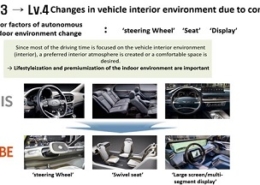
As autonomous driving technology advances, the adoption rate of OLED will increase
At UBI Research’s ‘OLED Settlement Seminar in the second half of 2021’ held on the 19th, Park Seon-hong, head of the Korea Automobile Research Institute, gave a presentation on ‘the status and outlook of future automotive display development’.
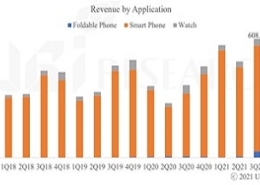
Smartphone and foldable OLED shipments expected to exceed 700 million units in 2025
At UBI Research’s ‘2021 OLED settlement seminar for the second half of the year’ held on the 19th, UBI Research CEO Choong-Hoon Yi gave a presentation on the settlement of small/mid-large OLED industry and future market prospects.

LG Display Wins Presidential Award for its Automotive P-OLED at the Korea Technology Awards
SEOUL, Korea (Nov. 17, 2021) – LG Display, the world’s leading innovator of display technologies, announced today that its Automotive P-OLED display won the Presidential Award, the highest honor for the most revolutionary technology of the year, at the 2021 Korea Technology Awards in Seoul, Korea. This is LG Display’s second Presidential Award after first winning the coveted honor for its outstanding 65-inch Rollable OLED panel at the 2019 Korea Technology Awards.
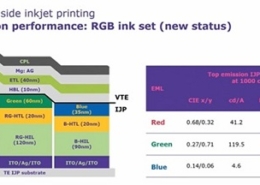
Merck’s Blue Ink Material Lifetime Announced 65% Improvement Year-over-Year.
At ‘Display Insight 2021’ held online on November 4th, ‘Joachim Kaiser’, global application manager of Merck, presented ‘Our OLED solutions – livilux®’. When presenting the ink portion of livilux’s OLED materials, Kaiser noted that “Inkjet printing is the only technology that combines RGB parallel pixel layout with scalability for large display sizes”.
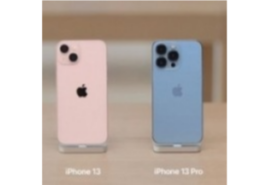
BOE will start mass production of iPhone 13 panels from October.
According to the ‘China Trend Report for the 1st week of December’ published by UBI Research recently, Among Chinese companies, BOE maintained the No. 1 position with an overwhelming share in OLED panel shipments for smartphones in October.

[GLOBAL TECH KOREA 2021] Samsung Display ‘Display Innovation: Form Factor, Energy Saving, Color’
At ‘GLOBAL TECH KOREA 2021’ held in September 2021, Changhee Lee, Head of Samsung Display’s Next Generation Research Department (Vice President) delivered a keynote speech on the topic of ‘Display Innovation: Form Factor, Energy Conservation, and Color’.

[GLOBAL TECH KOREA 2021] Solus Advanced Materials ‘Expansion of new businesses other than light emitting materials such as high refractive filler and TFE’
At ‘GLOBAL TECH KOREA 2021’ held in September 2021, Taehyung Kim, Head of Electronic Materials Business Division, Solus Advanced Materials made a presentation under the theme of ‘Solus’ Giant Step To Lead OLED Materials Technology’.
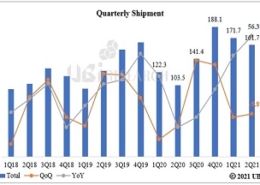
Small OLED performance in the second quarter of 2021
According to the market track on small OLED market performance of less than 10 inches published by UBI Research, Revenue and shipments in the second quarter were about $9.5 billion and 161.7 million units, respectively.
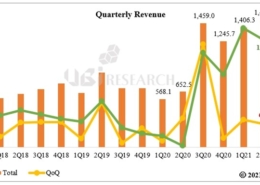
Medium & Large OLED performance in the second quarter of 2021
UBI Research has published a market track on the market performance of 10-inch and larger OLEDs. Applications include TVs, monitors, laptops, and tablet PCs.
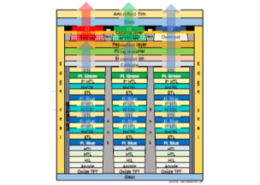
Samsung Display begins mass production of QD-OLED in the fourth quarter of 2021
Samsung Display begins mass production of QD-OLED in the fourth quarter of 2021, a new growth opportunity in the large OLED market

QNED (quantum dot nano-rod LED) structure and core technology
Samsung Display research center is accelerating the development of QNED as the next-generation display following OLED.
The reason Samsung Display is developing QNED as part of its large-size display business is that it is the only display that can produce the image quality that Samsung Display’s biggest customer, Samsung Electronics, can satisfy.
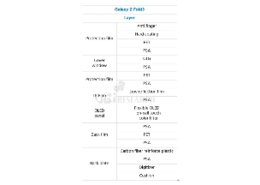
Samsung Electronics widens the technology gap by applying new technology to ‘Galaxy Z Fold3’.
According to the ‘2021 OLED Components and Materials Report’ recently published by UBI Research, the ‘Galaxy Z Fold3’, which is expected to be released by Samsung Electronics in August, has UPC (under panel camera) and pol-less (or color filter on) encapsulation, COE) and S Pen technology are expected to be newly applied.
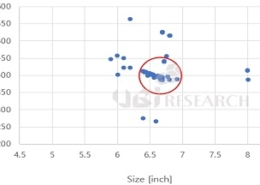
97.5% of 6-inch OLED smartphones released in the first half of 2021
Of the 122 OLED smartphones released in the first half of 2021, 119 6-inch smartphones were released, occupying an overwhelming share of 97.5%.
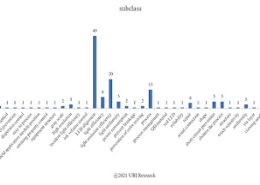
How far has QNED completed?
The reality of QNED (quantum dot nano-rod LED), which Samsung Display is preparing as a next-generation display, has become clear.
As a result of analyzing 160 patents applied by Samsung Display, it was confirmed that the structure constituting the QNED has already been completed, and that the only remaining task is to keep the number of nano-rod LEDs arranged in the light-emitting pixel constant.
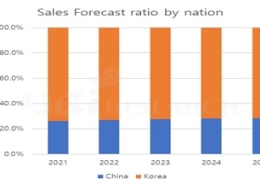
UBI Research predicts $2.25 billion in the OLED emitting material market in 2025
UBI Research (www.ubiresearch.com), a company specializing in OLED market research, cites the recently published ‘OLED emitting material market track for the second quarter of 2021’. It is predicted that the market for light emitting materials for OLED will grow at an average annual rate of 9% to reach $2.25 billion in 2025.
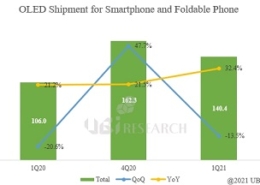
Small OLED performance and forecast in the first quarter of 2021
UBI Research has published a market track on the market performance of small OLED under 10 inches. The main application products are foldable phones, smartphones, and watches.
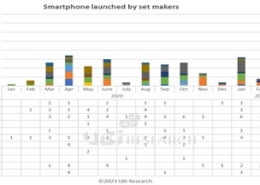
Publication of China OLED industry trend analysis report
Despite the ongoing Corona-19 situation and the US government’s sanctions on Huawei, the adoption of OLED by Chinese smartphone makers is gradually increasing.

Forecast of OLED Light Emitting Materials Market in 2021: $15.2 billion
Citing the recently published ‘2021 OLED emitting material report’, UBI Research (www.ubiresearch.com), a company specializing in OLED market research, forecasted that the OLED emitting material market size in 2021 will be $1.52 billion, a 17% increase from $1.3 billion in 2020.

Why did Apple choose LTPO?
Utilizing high refresh rate and reducing power consumption by up to 20%
but, 30% more complex process

Equipped with OLED panel on Samsung Display in Hyundai Electric Vehicle’Ionic 5′
Samsung Display’s first OLED panel mounted on Hyundai’s first exclusive electric vehicle,’Ionic 5′
Optional digital side mirror to mount camera and display screen
Significantly helps to improve the mileage and fuel economy of electric vehicles
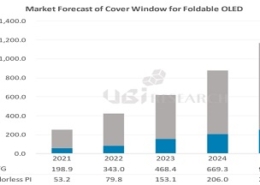
Cover window market forecast for foldable phones
The biggest difference between flexible OLED and foldable OLED will be the cover window material. In terms of price competitiveness, various Colorless Poly Imide (CPI) are superior to suppliers, but in the end, the cover window market is expected to depend on which material Samsung Electronics and Apple choose.
